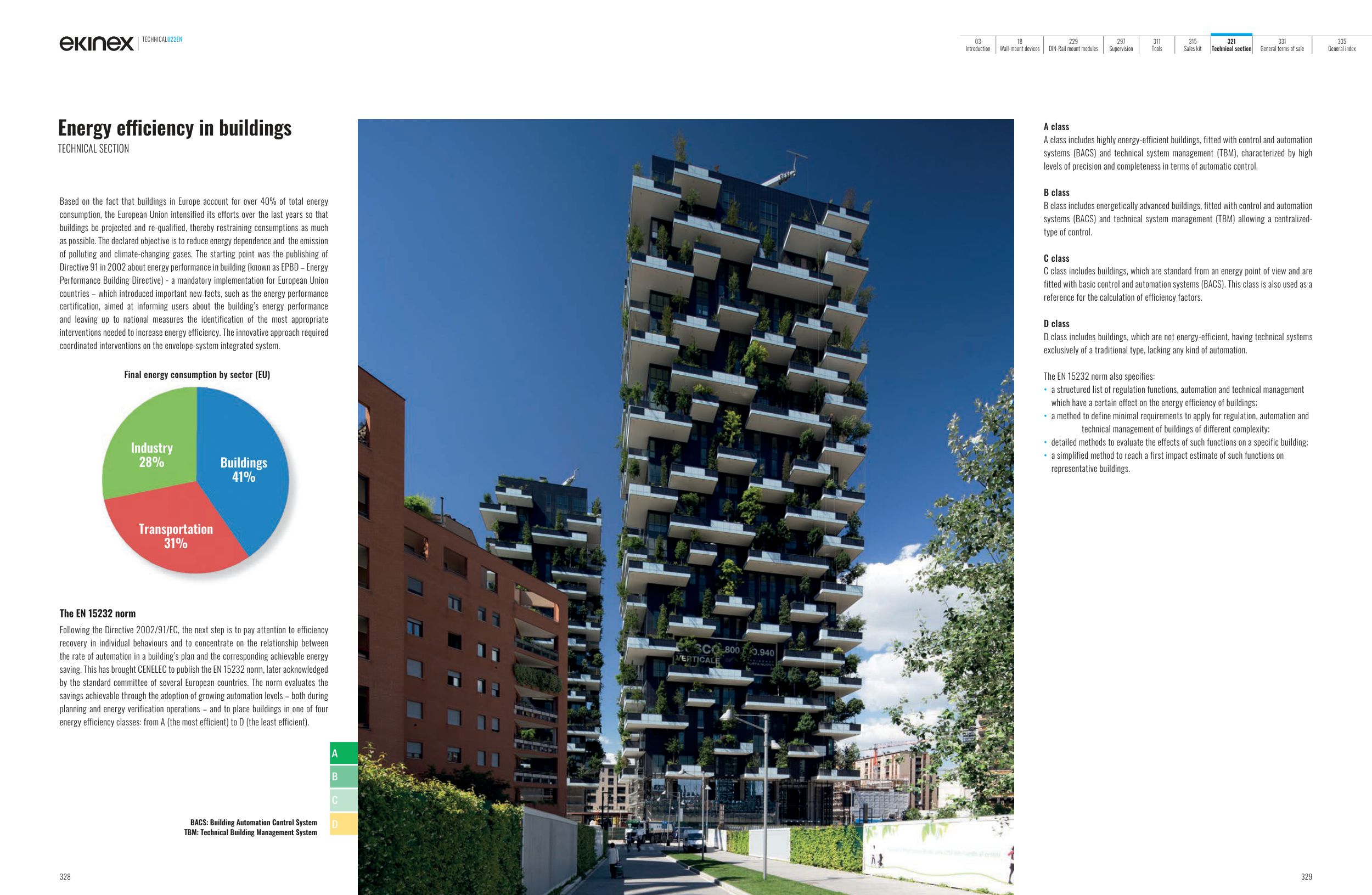Energy efficiency in buildings
TECHNICAL SECTION
Based on the fact that buildings in Europe account for over 40% of total energy
consumption, the European Union intensified its efforts over the last years so that
buildings be projected and re-qualified, thereby restraining consumptions as much
as possible. The declared objective is to reduce energy dependence and the emission
of polluting and climate-changing gases. The starting point was the publishing of
Directive 91 in 2002 about energy performance in building (known as EPBD – Energy
Performance Building Directive) - a mandatory implementation for European Union
countries – which introduced important new facts, such as the energy performance
certification, aimed at informing users about the building’s energy performance
and leaving up to national measures the identification of the most appropriate
interventions needed to increase energy efficiency. The innovative approach required
coordinated interventions on the envelope-system integrated system.
The EN 15232 norm
Following the Directive 2002/91/EC, the next step is to pay attention to efficiency
recovery in individual behaviours and to concentrate on the relationship between
the rate of automation in a building’s plan and the corresponding achievable energy
saving. This has brought CENELEC to publish the EN 15232 norm, later acknowledged
by the standard committee of several European countries. The norm evaluates the
savings achievable through the adoption of growing automation levels – both during
planning and energy verification operations – and to place buildings in one of four
energy efficiency classes: from A (the most efficient) to D (the least efficient).
BACS: Building Automation Control System
TBM: Technical Building Management System
A
B
C
D
Final energy consumption by sector (EU)
Industry
28%
Buildings
41%
Transportation
31%
A class
A class includes highly energy-efficient buildings, fitted with control and automation
systems (BACS) and technical system management (TBM), characterized by high
levels of precision and completeness in terms of automatic control.
B class
B class includes energetically advanced buildings, fitted with control and automation
systems (BACS) and technical system management (TBM) allowing a centralized-
type of control.
C class
C class includes buildings, which are standard from an energy point of view and are
fitted with basic control and automation systems (BACS). This class is also used as a
reference for the calculation of efficiency factors.
D class
D class includes buildings, which are not energy-efficient, having technical systems
exclusively of a traditional type, lacking any kind of automation.
The EN 15232 norm also specifies:
• a structured list of regulation functions, automation and technical management
which have a certain effect on the energy efficiency of buildings;
• a method to define minimal requirements to apply for regulation, automation and
technical management of buildings of different complexity;
• detailed methods to evaluate the effects of such functions on a specific building;
• a simplified method to reach a first impact estimate of such functions on
representative buildings.
TECHNICAL022EN
328
329
03
Introduction
18
Wall-mount devices
229
DIN-Rail mount modules
297
Supervision
311
Tools
315
Sales kit
321
Technical section
331
General terms of sale
335
General index


















































































































































































